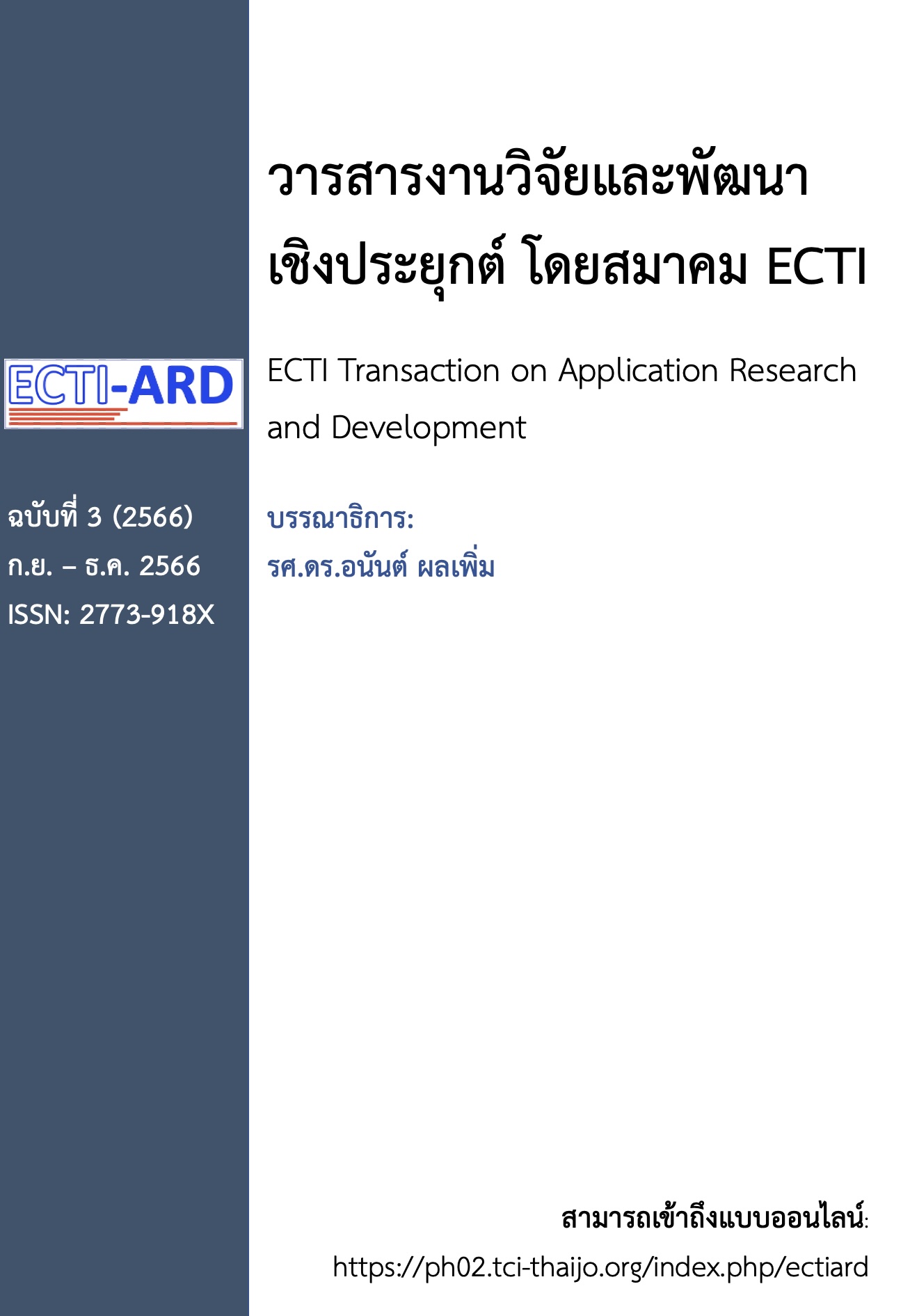การแก้ปัญหาข้อมูลไม่สมดุลแบบหลายคลาสสำหรับการทำนายการยกเลิกการใช้บริการอินเทอร์เน็ต
Main Article Content
บทคัดย่อ
การยกเลิกการใช้บริการเป็นปัญหาที่พบได้ทั่วไปในหลายธุรกิจ โดยเฉพาะอย่างยิ่งกับธุรกิจโทรคมนาคม การจัดการเพื่อลดอัตราการยกเลิกใช้บริการอย่างมีประสิทธิภาพเป็นสิ่งสำคัญที่ธุรกิจต้องการ เพื่อสร้างความประทับใจให้กับลูกค้า ดังนั้นธุรกิจจำเป็นจะต้องเข้าใจถึงเหตุผลที่ลูกค้ายกเลิกการใช้บริการก่อน ในงานวิจัยนี้ ได้ประยุกต์ใช้การเรียนรู้ของเครื่องโดยใช้เทคนิคการทำนายแบบหลายคลาสกับธุรกิจการให้บริการอินเทอร์เน็ต โดยเสนอการแก้ปัญหาเป็นสองส่วน 1) แก้ปัญหาข้อมูลไม่สมดุลในระดับข้อมูล โดยใช้เทคนิคการสุ่มเพิ่มข้อมูลด้วย SMOTE
2) แก้ปัญหาข้อมูลไม่สมดุลด้วยการปรับค่าน้ำหนักข้อมูลในกระบวนการเรียนรู้ร่วมกันด้วยเทคนิค XGBoost ผลลัพธ์ที่ได้จากการทำนายพบว่าสามารถทำนายคลาสที่มีข้อมูลขนาดใหญ่และข้อมูลขนาดเล็กได้อย่างเท่าเทียมและแม่นยำ
Article Details

อนุญาตภายใต้เงื่อนไข Creative Commons Attribution-NonCommercial-NoDerivatives 4.0 International License.
เอกสารอ้างอิง
P. Bhanuprakash and G.S. Nagaraja, "A Review on Churn Prediction Modeling in Telecom Environment". 2017 2nd IEEE International Conference on Computational Systems and Information Technology for Sustainable Solutions (CSITSS). 21-23 Dec. Bengaluru India : pp. 8-12, 2017.
A. Śniegula, A. Poniszewska-Marańda, M. Popović, "Study of machine learning methods for customer churn prediction in telecommunication company". The 21st International Conference on Information Integration and Web-based Applications & Services (iiWAS2019). 2-4 Dec. Munich Germany : pp. 640-644, 2019.
A. Gaur and R. Dubey, "Predicting Customer Churn Prediction In Telecom Sector Using Various Machine Learning Techniques". 2018 International Conference on Advanced Computation and Telecommunication (ICACAT). 28-29 Dec. Bhopal India : pp. 1-5, 2018.
F. Khan and S. S. Kozat, "Sequential churn prediction and analysis of cellular network users — A multi-class, multi-label perspective". 2017 25th Signal Processing and Communications Applications Conference (SIU). 15-18 May. Antalya Turkey : pp 1-4, 2017.
M. M. Khamsan and R. Maskat, "Handling highly imbalanced output class label: a case study on Fantasy Premier League (FPL) virtual player price changes prediction using machine learning," Malaysian Journal of Computing (MJoC)., Vol. 4(2), pp. 304-316, 2019.
พุทธิพร ธนธรรมเมธี และ เยาวเรศ ศิริสถิตย์กุล, "เทคนิคการจำแนกข้อมูลที่พัฒนาสำหรับชุดข้อมูลที่ไม่สมดุลของภาวะข้อเข่าเสื่อมในผู้สูงอายุ," วารสารวิทยาศาสตร์และเทคโนโลยี, ปีที่ 27 (ฉบับที่ 6), หน้า 1164-1178, 2019.
M. Bach, A. Werner and M. Palt, “The Proposal of Undersampling Method for Learning from Imbalanced Datasets,” Procedia Computer Science., Vol. 159, pp. 125-134, 2019.
A. More. (11 January 2023). Survey of resampling techniques for improving classification performance in unbalanced datasets, [Online]. Available : ResearchGate, https://www.researchgate.net/
H. R. Sanabila and W. Jatmiko, "Ensemble Learning on Large Scale Financial Imbalanced Data". 2018 International Workshop on Big Data and Information Security (IWBIS). 8-9 May. Jakarta Indonesia : pp. 93-98, 2018.
P. Goyal, R. Rani and K. Singh, "Comparative Analysis of Machine Learning and Ensemble Learning Classifiers for Parkinson’s Disease Detection". 2022 3rd International Conference on Computing, Analytics and Networks (ICAN), 18-19 Nov. Rajpura Punjab India : pp. 1-6, 2022.
Nasritha, K., Kerdprasop, K., & Kerdprasop, N., “Comparison of Sampling Techniques for Imbalanced Data Classification,” Journal of Applied Informatics and Technology., Vol. 1(1), pp. 20–37, 2018.
Virakul, R., & Waiyamai, K. “Feature Selection and Imbalanced Data Problem Solving in Classification of Banking Fraud Prevention”. 14th National Conference on Information Technology (NCIT-2022). 10-11 Nov. Nonthaburi Thailand : pp. 41-45, 2022.


